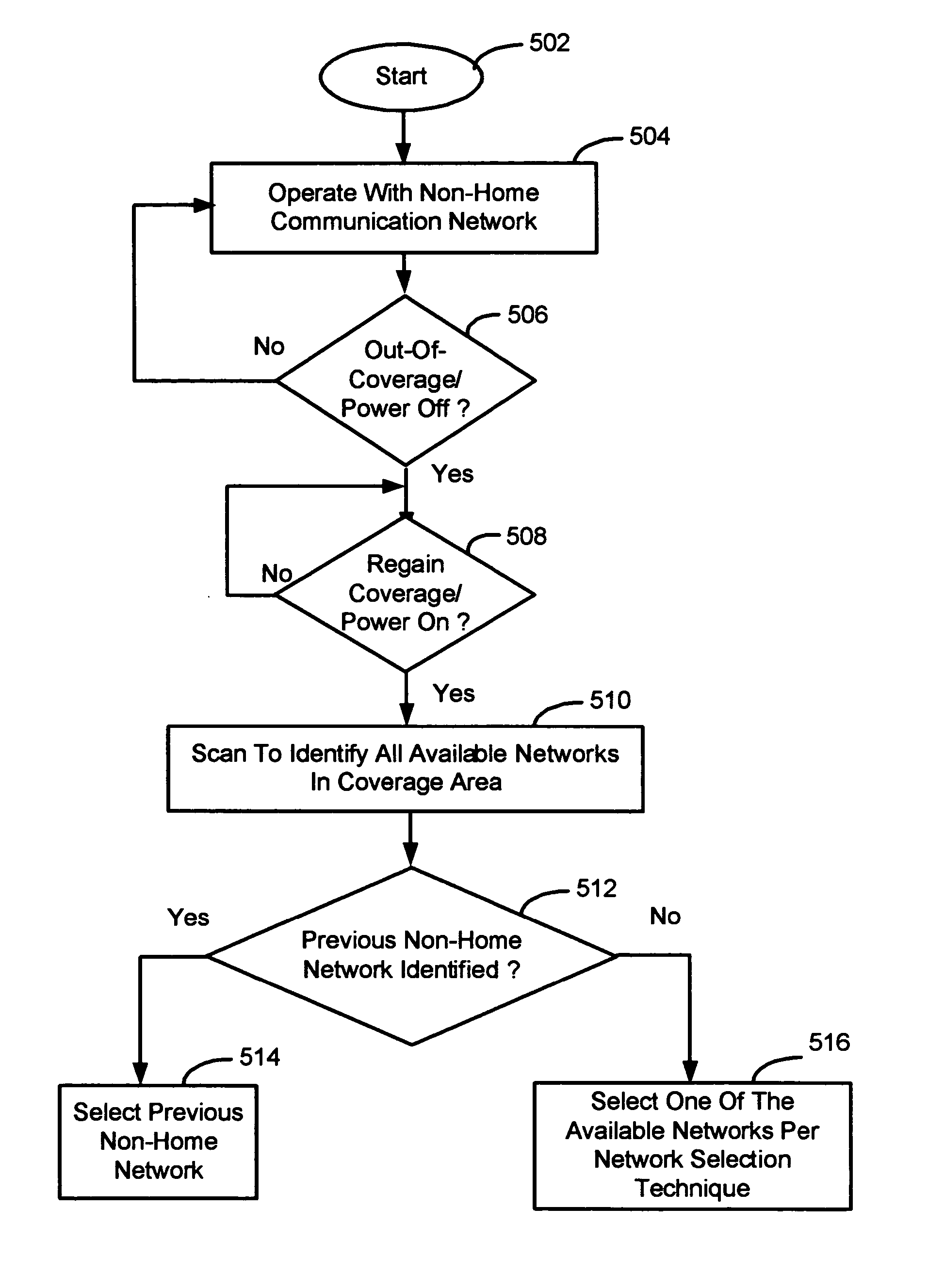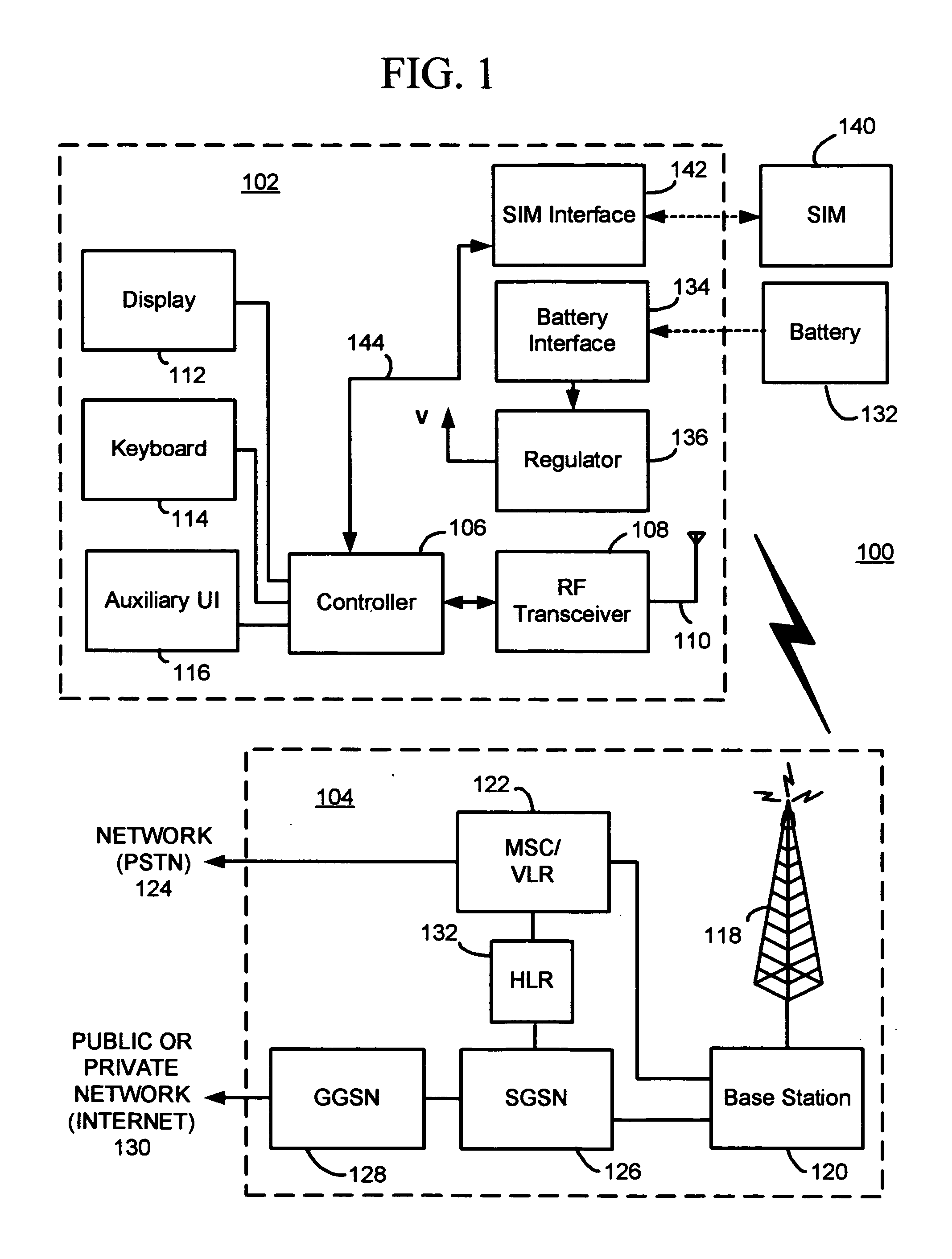Network selection methods and apparatus with home network prioritization after network signal recovery or power-on
a network signal recovery or power-on technology, applied in the field of mobile stations and network selection methods, can solve the problems of not clearly and specifically addressed specificities, and the selection network may not be the optimal network with which to opera
- Summary
- Abstract
- Description
- Claims
- Application Information
AI Technical Summary
Benefits of technology
Problems solved by technology
Method used
Image
Examples
Embodiment Construction
[0021] Network selection methods and apparatus with home network prioritization after network signal recovery and / or power on are described herein. In one illustrative example involving “automatic” network selection, a mobile station selects and operates with a non-home communication network The mobile station then experiences an out-of-coverage condition (or a power down condition) but subsequently regains signal coverage (or is powered back on). In response, the mobile station scans to identify a plurality of communication networks in its coverage area. If a home communication network (e.g. HPLMN) is identified as being available, the mobile station selects and operates with the home communication network. Otherwise, if the previous non-home communication network (e.g. RPLMN) is identified as being available, the mobile station continues operation with the previous non-home communication network. In another illustrative example involving “manual” network selection, a user input fr...
PUM
 Login to View More
Login to View More Abstract
Description
Claims
Application Information
 Login to View More
Login to View More - R&D
- Intellectual Property
- Life Sciences
- Materials
- Tech Scout
- Unparalleled Data Quality
- Higher Quality Content
- 60% Fewer Hallucinations
Browse by: Latest US Patents, China's latest patents, Technical Efficacy Thesaurus, Application Domain, Technology Topic, Popular Technical Reports.
© 2025 PatSnap. All rights reserved.Legal|Privacy policy|Modern Slavery Act Transparency Statement|Sitemap|About US| Contact US: help@patsnap.com



